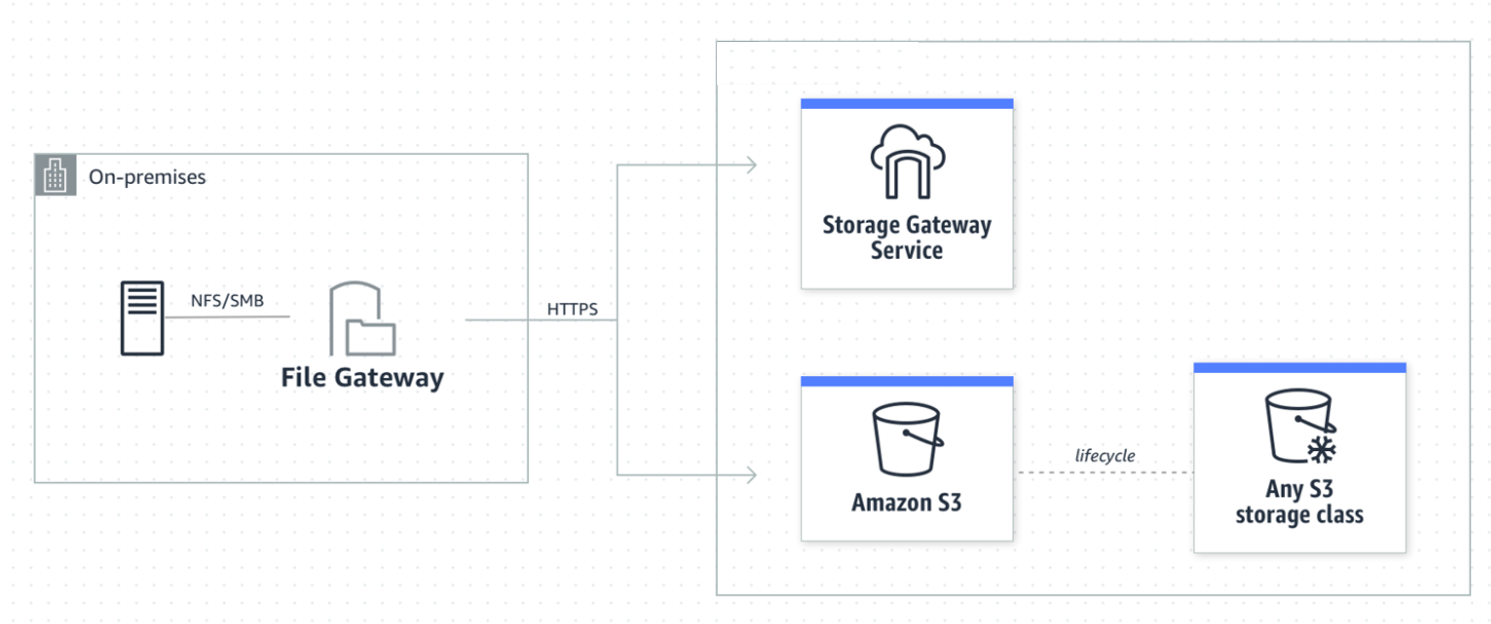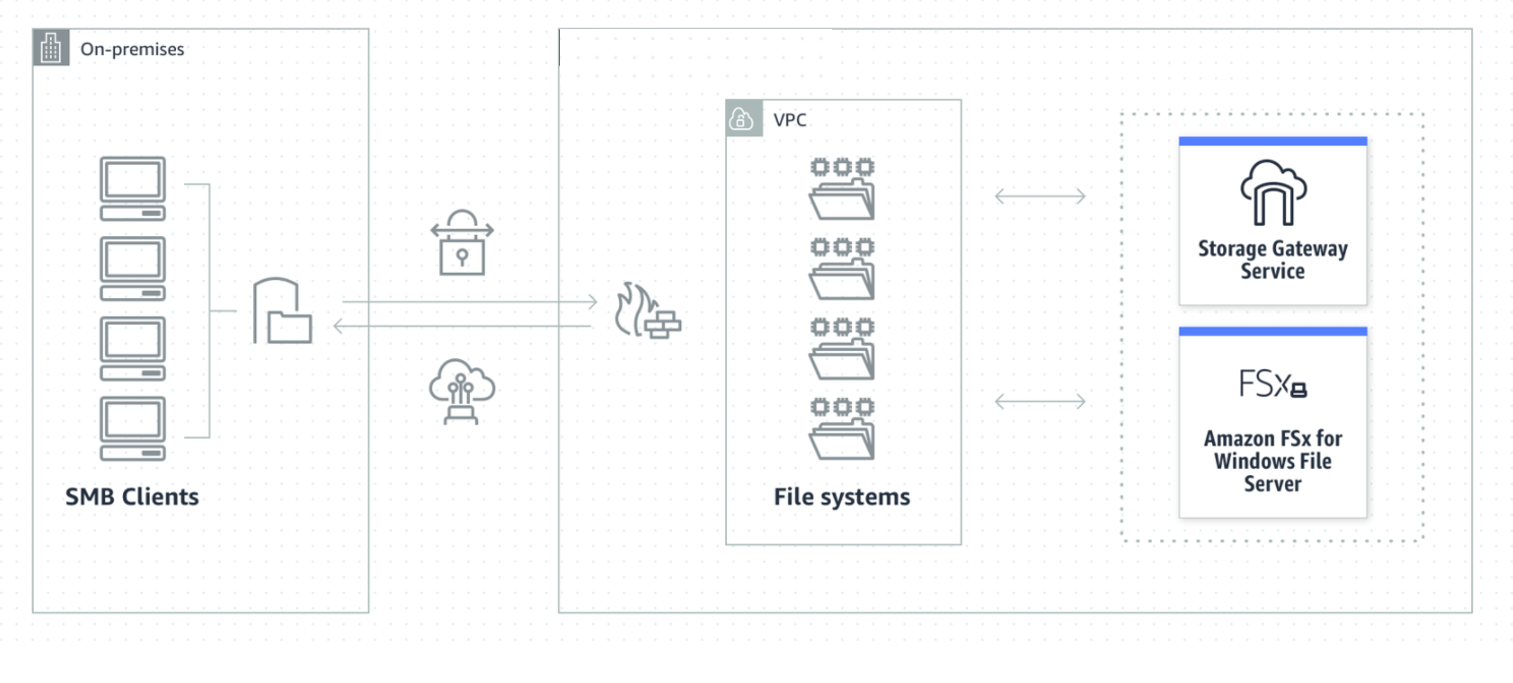File Gateway
Nearly all enterprises, regardless of industry, have to store files, whether they are backups, media content, or files generated by specialized industry applications. Managing and scaling on-premises infrastructure to provide online storage and distribution of such backup or content files is often burdensome and costly, requiring expensive hardware refreshes, data center expansion, and software licensing. These large file data repositories can be siloed in specialized file servers or backup systems, limiting access for file sharing, analytics, or media processing.
You can choose from two file gateway types for your latency-sensitive applications and workloads that require local caching and file protocol access. Amazon S3 File Gateway enables you to store file data as objects in Amazon S3 cloud storage for data lakes, backups, and ML workflows. For user or team file shares, and file-based application migrations, Amazon FSx File Gateway provides low-latency, on-premises access to fully managed file shares in Amazon FSx for Windows File Server.
How it works
Amazon S3 File Gateway

Amazon FSx File Gateway

Tape Gateway
Replaces physical tape libraries
Tape Gateway emulates physical tape libraries, removes the cost and complexity of managing physical tape infrastructure, and provides more durability than physical tapes. You don’t need to purchase tape libraries, handle magnetic tape media, clean tape cartridges, or deploy resources to manage them. You also don’t need to invest in and manage expensive migrations from older physical tapes to newer generation media. Tape Gateway stores virtual tapes in Amazon S3, Amazon S3 Glacier Flexible Retrieval (formerly S3 Glacier), and Amazon S3 Glacier Flexible Retrieval (formerly S3 Glacier) Deep Archive, protected by 99.999999999% of durability.
Simplifies management
Tape Gateway stores your virtual tapes in S3 buckets managed by the Amazon Storage Gateway service, so you don’t have to manage your own Amazon S3 storage.
Lowers total cost of ownership
Tape Gateway compresses and stores archived virtual tapes in the lowest cost Amazon S3 storage classes, Amazon S3 Glacier Flexible Retrieval (formerly S3 Glacier) and Amazon S3 Glacier Flexible Retrieval (formerly S3 Glacier) Deep Archive. This makes it feasible for you to retain long-term data in the Amazon Web Services Cloud at very low cost. With Tape Gateway, you only pay for what you consume, with no minimum commitments and no upfront fees.
Volume Gateway
Volume Gateway presents cloud-backed iSCSI block storage volumes to your on-premises applications. Volume Gateway stores and manages on-premises data in Amazon S3 on your behalf and operates in either cache mode or stored mode. In the cached Volume Gateway mode, your primary data is stored in Amazon S3, while retaining your frequently accessed data locally in the cache for low latency access. In the stored Volume Gateway mode, your primary data is stored locally and your entire dataset is available for low latency access on premises while also asynchronously getting backed up to Amazon S3. In either mode, you can take point-in-time copies of your volumes using Amazon Backup, which are stored in Amazon Web Services as Amazon EBS snapshots. Using Amazon EBS Snapshots enables you to make space-efficient versioned copies of your volumes for data protection, recovery, migration, and various other copy data needs.
Learn more about Amazon Storage Gateway pricing
Amazon Web Services China Summit is coming soon!
June 19th - 20th | Shanghai Expo Center
Connect with 12,000+ cloud professionals, discover real-world applications across industries, and shape what’s next